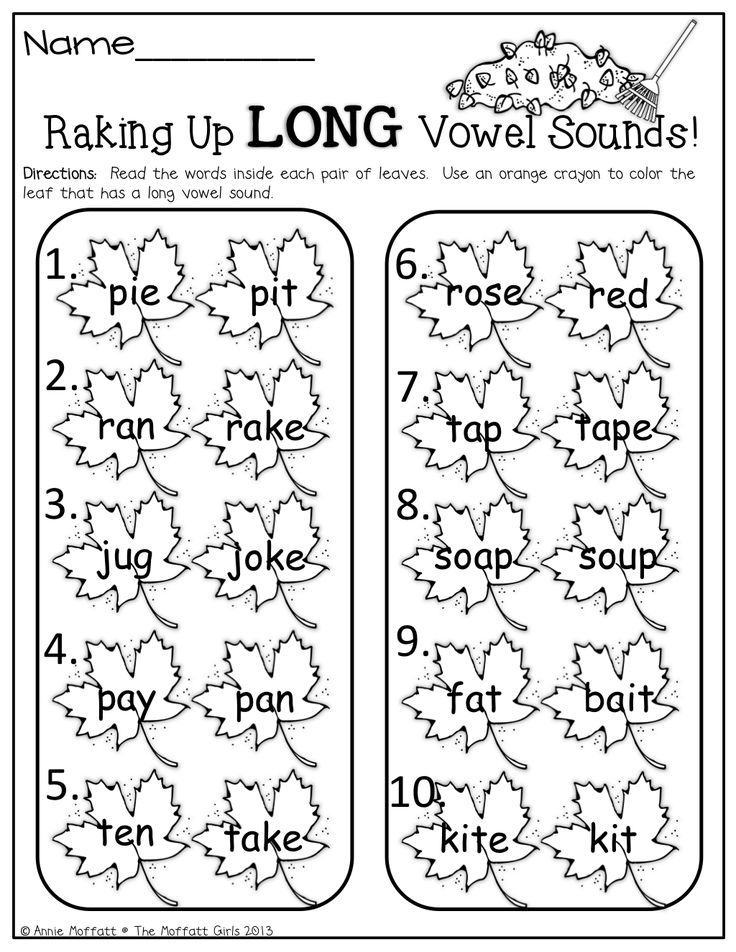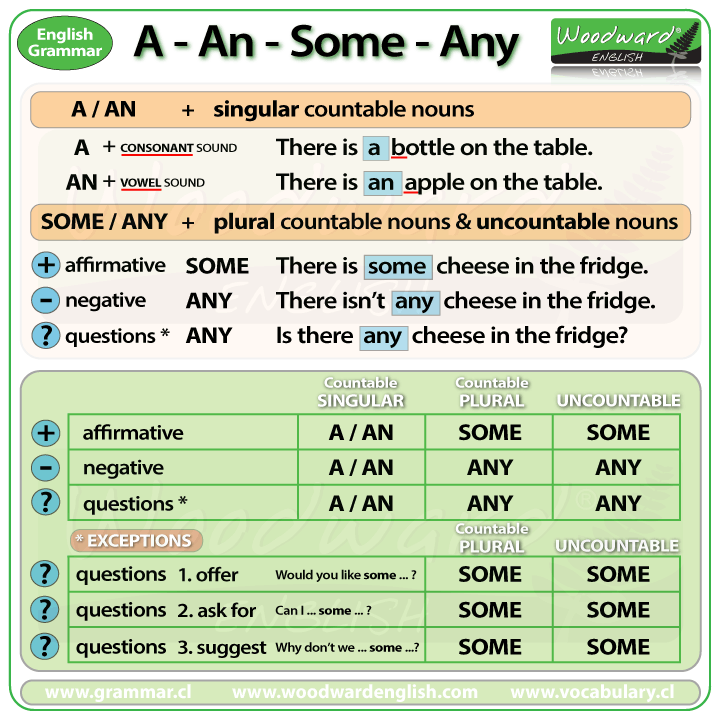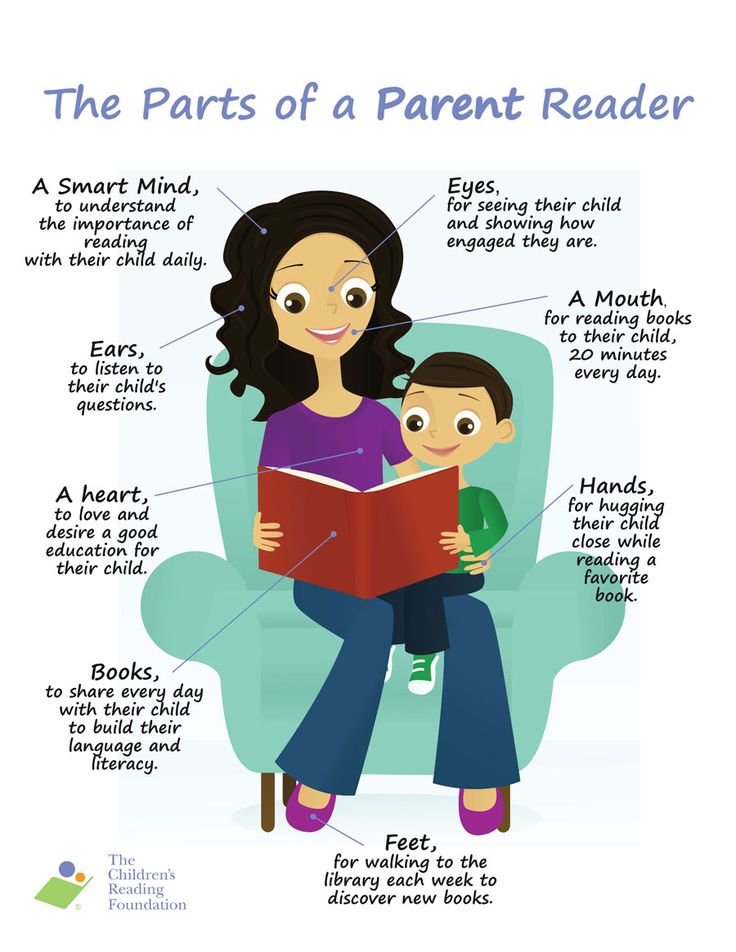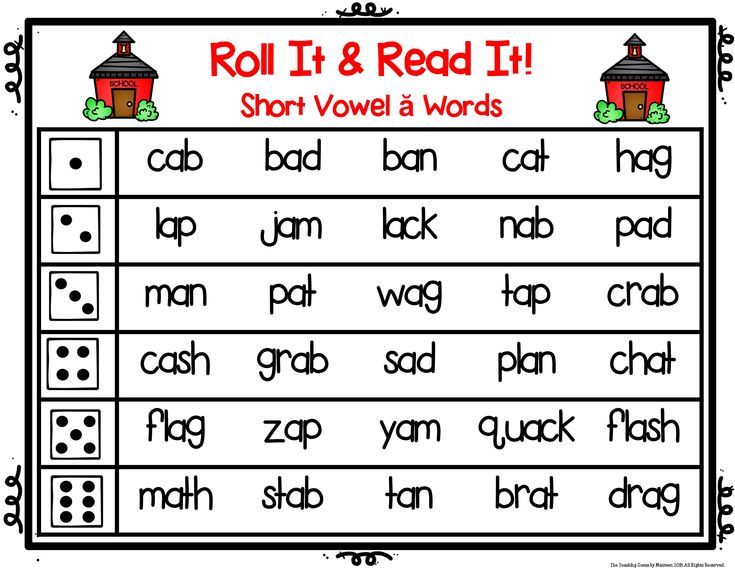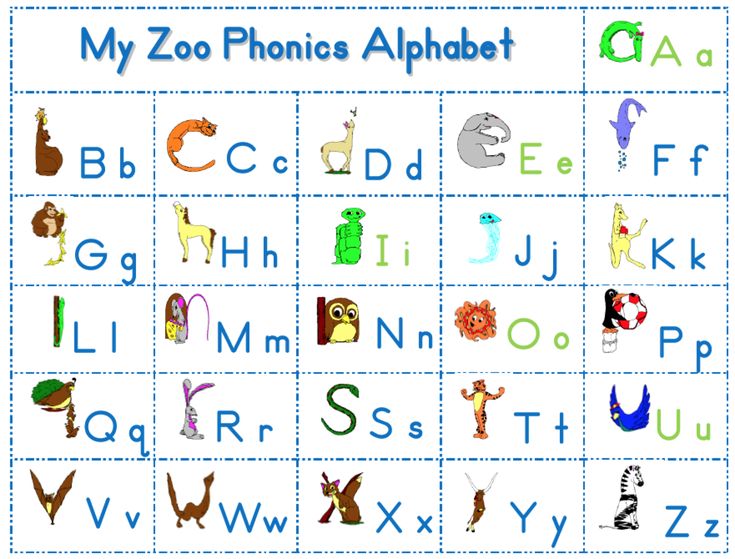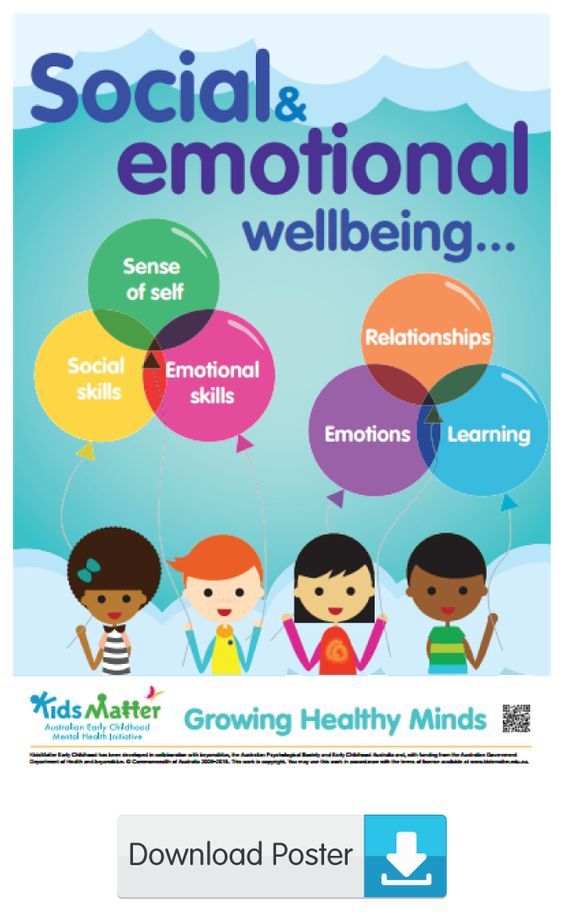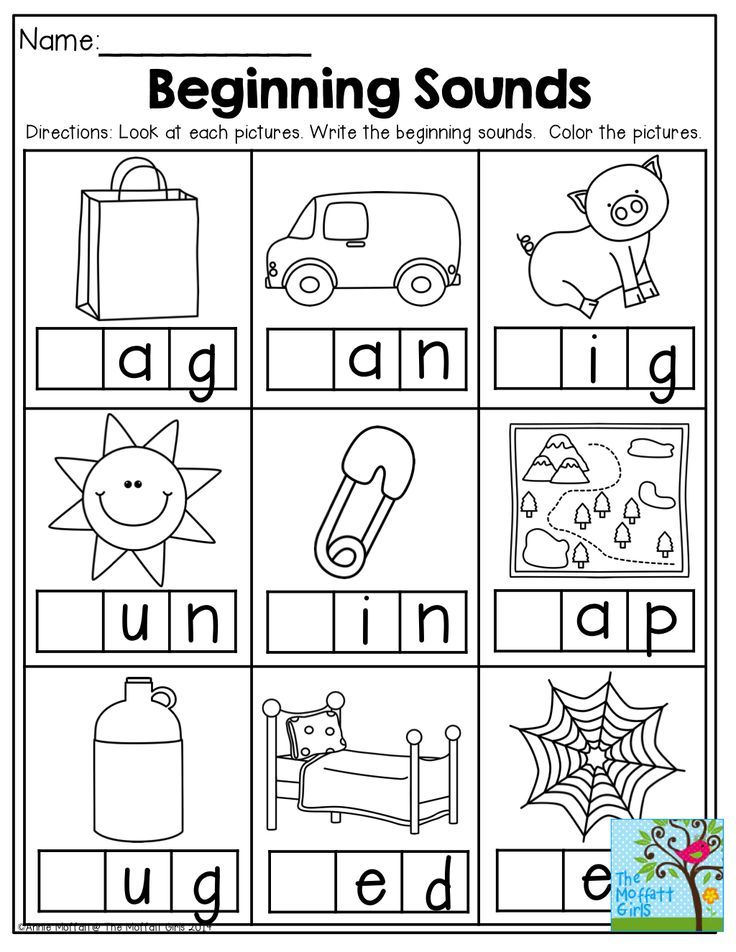Long and short vowel activity
FREE Short & Long Vowels Digital Activity
- jycastle417
- cvc, cvce, digital learning, digital resources, distance learning, first grade literacy, google classroom, google slides, kindergarten literacy, long vowels, phonics, short vowels, summer review, vowels, word work
Are you looking for an interactive way to have your students or child practice short and long vowels with a fun summer twist? Our youngest just wrapped up his Kindergarten year (distance learning style) and this is an area that really needs extra exposure before he starts first grade. As a result, we created this FREE digital short and long vowels activity for Google Slides™ to help him over the summer. By sharing this freebie with you, we hope it helps many other young readers along the way!
Activity #1: Sorting Short & Long Vowels
What’s great about these activities is that it covers all the vowels (A, E, I, O & U), it’s paperless and gives younger students additional practice with digital learning resources. First, students begin by reading the six words at the top of each slide. As they read each word, they decide if it belongs in the short or long vowel beach bucket. To move the word, simply click on it and drag. Drop it anywhere into the bucket and move on to the next word. It’s amazing how quickly they get the hang of this!
Activity #2: Read, Match & Type
After students sort the words by short and long vowels, they will move on to the second activity. Here, they match the words from the word bank to the pictures in each shell. This will provide much needed typing practice as they type each word into the blank space. Children at this age are working hard to learn where each letter is located on the keyboard, so it’s important to give them opportunities to play with the keyboard on a computer, laptop or tablet.
Extended Learning
You can continue practicing this skill by going on a word hunt using your child’s favorite book! As you read a story together, stop at each page and search for words that have the long or short vowel sounds.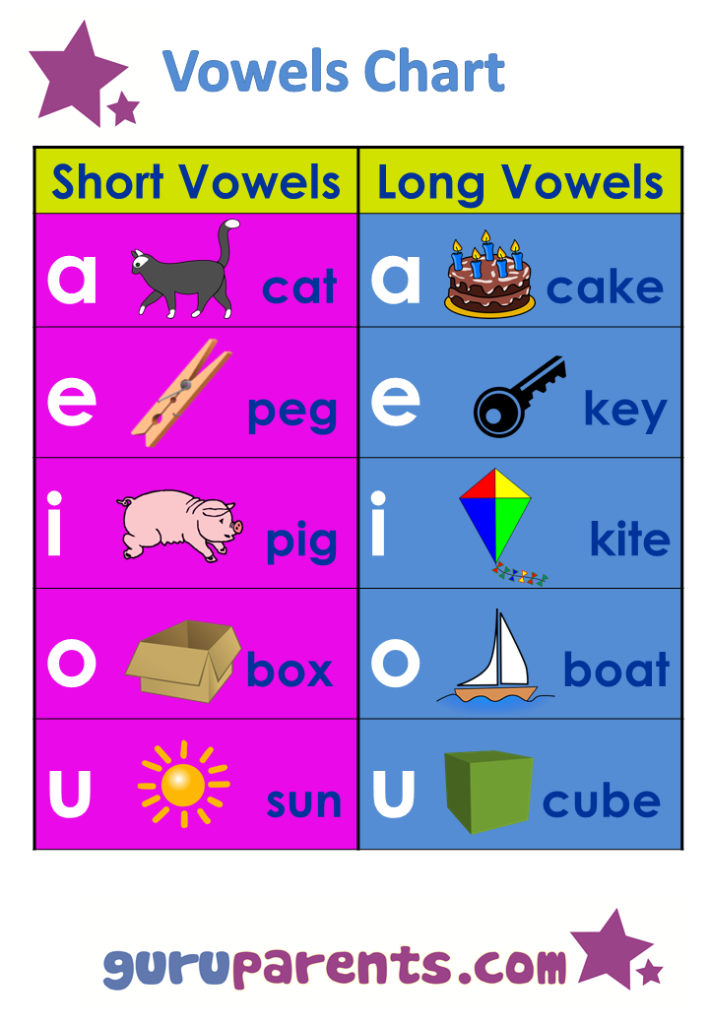 We love the Pete the Cat 12-Books Phonics Fun set because it focuses on the short and long vowel sounds that reinforce the skills covered in this digital activity. Each simple story features repeated examples of the various vowel sounds along with common sight words. It’s a perfect starter set that will help your child master the skills they need to become a fluent reader.
We love the Pete the Cat 12-Books Phonics Fun set because it focuses on the short and long vowel sounds that reinforce the skills covered in this digital activity. Each simple story features repeated examples of the various vowel sounds along with common sight words. It’s a perfect starter set that will help your child master the skills they need to become a fluent reader.
Whether you use this activity for summer review or at the beginning of the school year, we hope you find it super helpful and engaging for your student(s). Click on the download button below and a PDF file will open. This will walk you through how to access this resource in Google Slides™. There are also instructions on how to assign a copy for each of your students in Google Classroom™ if desired.
Prevent the Summer Slide!
To help prevent the summer slide, we created summer review packets available for PRE-KINDERGARTEN and KINDERGARTEN. These math and literacy activities help little learners by reviewing important skills during the summer months.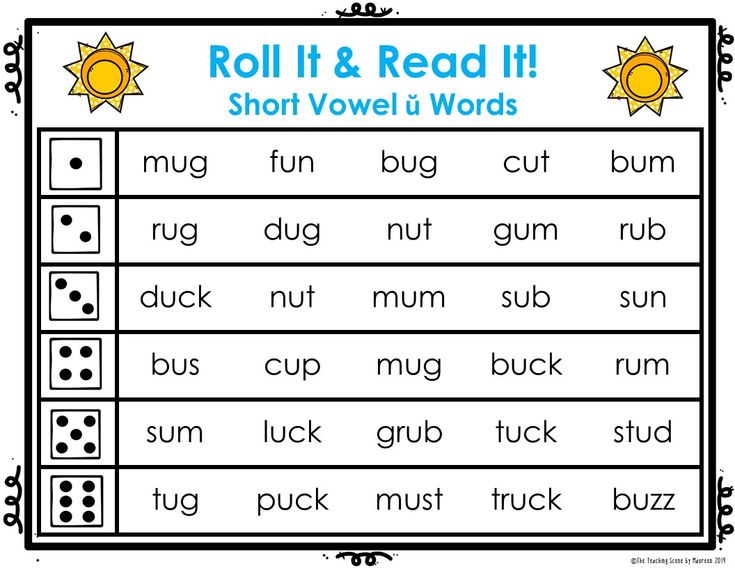 Above all else, keep reading EVERY. SINGLE. DAY and make sure children get plenty of time to enjoy their much needed break. Have a wonderful summer and we wish you all the best in the next school year!
Above all else, keep reading EVERY. SINGLE. DAY and make sure children get plenty of time to enjoy their much needed break. Have a wonderful summer and we wish you all the best in the next school year!
8 Simple and Fun Short Vowel Sound Activities for all Ages
Want to lessen the anxiety that comes with pronunciation-focused classes and get students excited to learn?
Here are eight simple and fun short vowel sound activities you can use to teach students of any age or level:
1. Pronunciation Maze
Best suited for children.
You’ll need to prepare a worksheet filled with words in a maze layout for this activity. Students have to make their way through the word maze by finding words with the same vowel sounds.
It goes without saying that you should tailor the maze to their English level. Some students may find it too easy, and that’s fine. The focus of the activity is making the students aware of the vowel sounds, getting them to use them, and helping them hear the difference between similar sounds, like “bit” and “beat,” for example.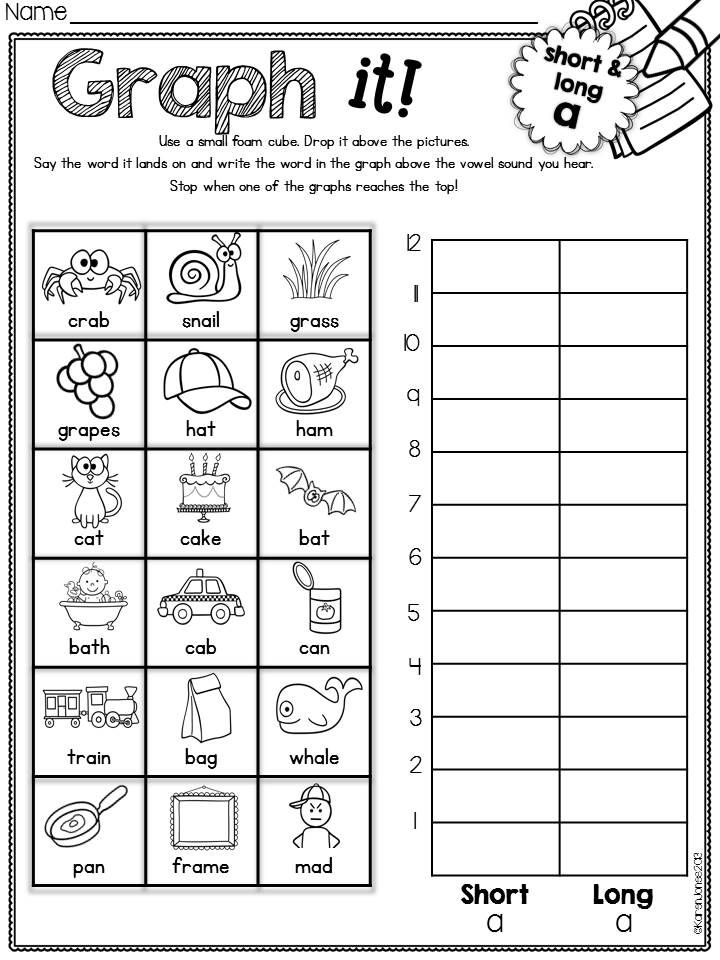
Pronunciation mazes work well because they help students notice patterns, like words with “ea” sounding the same.
Here’s a maze for the short “u” sound
Here’s a maze for the “oo” sound, as in “book.”
Here’s a maze for the “o,” “ou,” and “u” sounds.
Looking for a helpful resource for teaching short vowel sounds effectively? Check out the Creativa course Mastering North American Pronunciation. Our team has carefully designed the course with high-quality, engaging videos that dive deep into every area of English pronunciation so learners can speak fluently sooner.
Don’t miss the video episode on short vowel sounds that features real-life examples and tips you won’t find in coursebooks! Check out this free video from the course and get started today.
2. Shadow Reading
Suitable for any age and level.
Shadowing, or shadow reading, is a technique where you repeat an audio or video just after hearing it.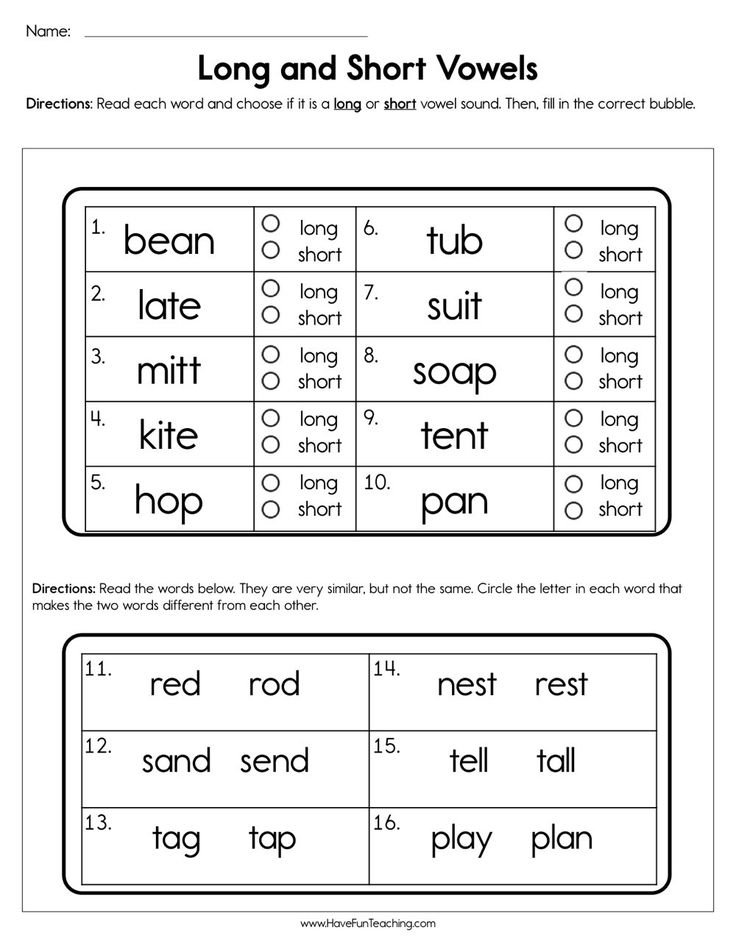 You’re acting like an “echo” or a “shadow” (hence the name). Students listen to the words and then say them back out loud, focusing on the correct pronunciation of the sounds rather than vocabulary.
You’re acting like an “echo” or a “shadow” (hence the name). Students listen to the words and then say them back out loud, focusing on the correct pronunciation of the sounds rather than vocabulary.
There are two ways you can use the shadow reading exercise:
- With an audio or video clip.
- With a text, like material from your coursebook, if you use one.
There are a few obvious benefits to shadow reading or shadowing:
- Students can do it on their own.
- It takes only about 15 minutes.
- It improves listening, prosody, and intonation.
- It’s often free– no need to print materials, etc. Just access to audio, videos, or an existing text.
Steps for shadowing:
- Find a suitable audio clip or video for your student’s level. You can use Youtube, Netflix, and even podcasts for English learners.

- The student listens once for context. It undoubtedly helps when the student understands the context of an audio or video before repeating the dialog. Get them to listen once, so you’re sure they understand the context and all the essential vocabulary.
- The student shadows the audio/video with a transcript. Speaking along while reading a transcript helps the student better understand the context and gives them the chance to review any vocabulary they don’t understand.
- The student shadows without a transcript. Depending on your student’s level, they may benefit from shadowing the audio/video without a transcript. While understanding all the vocabulary has its benefits, the focus here is on listening and imitating the sounds.
3. Fill in the Blanks
Better suited for children or beginner adults.
Fill in the blanks is perhaps one of the easiest and most effective activities for younger students. Everyone loves learning from images, and there’s a wealth of worksheets available online.
Everyone loves learning from images, and there’s a wealth of worksheets available online.
Prepare some easily recognizable images of things that have short vowel sounds. The words don’t have to be only three letters, but they must be suitable for the level of your students.
Create sentences with the short vowels blanked out that the students can easily guess with context, using the image. Be sure to put blanks in each short vowel so they can count the sounds.
After they’ve written their phrases, they can compare in pairs or groups and read aloud to practice the sounds.
Some phrases you could use:
- My pig is in the mud.
- The dog is on my bed.
- I go to the park in a car.
- The sun is very hot.
- The frog is on the log.
4. Minimal Pairs Bingo
Suitable for children or adults.
Minimal pairs bingo is an excellent activity for all ages and levels because you can easily adjust the words you use to suit your students.
For this activity, you’ll focus on two similar short vowel sounds using a bingo-style card of 25 squares. Before starting, tell each student to put each word in any square of the card.
Once they’ve done that:
- Ask one student to pick a word from a hat (you’ll have to cut them up beforehand) and read it to the class.
- The students should then cross out that word on their cards.
- Continue until a student has crossed out a complete row of 5 consecutive squares (vertically, horizontally, or diagonally). The winner has to yell “bingo!”
- After a student gets bingo, they should read back the words out loud for pronunciation practice.
You should keep track of the words you draw to check the winner’s card at the end.
5. Dictation
All ages and levels.
Spelling should improve as well as pronunciation when learning short vowels. Dictation serves to make that happen, and it’s easily adjusted to all ages and levels.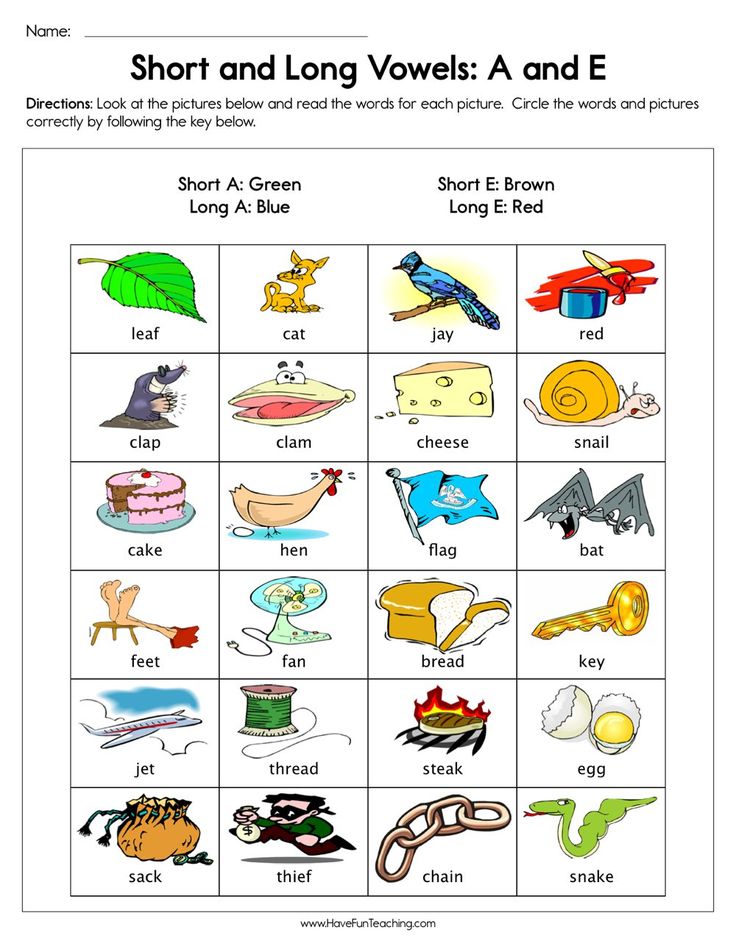
You can make standard dictation more exciting by putting students into groups or even making it a little more competitive with a time limit or something similar, which can also work well for a single student.
- Give everyone a piece of paper or mini whiteboard.
- Dictate words at a steady pace, repeating each once.
- Check all words and correct spelling where necessary.
- Dictate another round of new words slightly faster without repeating.
- Try moving onto sentences if they find it too easy.
6. Scrabble-style Phonics Game
Better suited beginners and young learners.
Memorizing pronunciation rules is usually challenging for most students learning short vowel sounds, but putting what they’ve learned into practice can be even more difficult.
This scrabble-style phonic game is a hit among beginner and young ESL students. Teachers present a short vowel sound, and students have the chance to get creative with the words they come up with.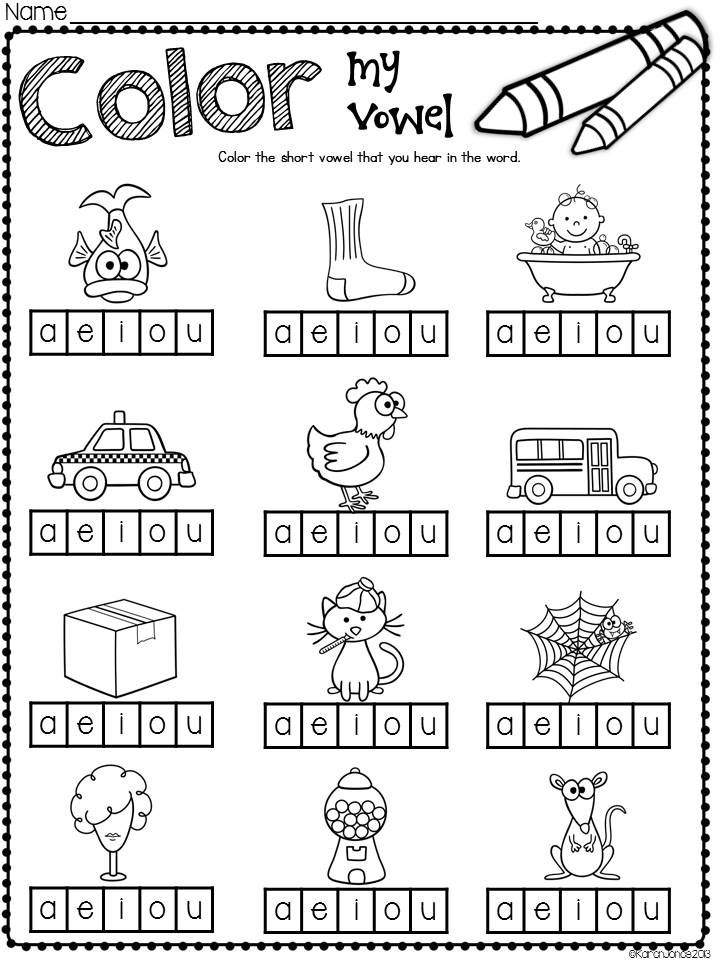
- Give your students their sheet of letters. You can even design your own but make sure to exclude vowels.
- Give them a vowel (or more if you want to do bigger words).
- Student draws two or more letters and dictates the words they make. Then you list which words are real vs. not real.
- Students get the points for the corresponding letters. The point system is often an encouragement.
7. CVC Dice Game (consonant-vowel-consonant)
Children or adults of beginner level (A1/A2).
You can use real dice with a chart of vowels or print a premade set for this activity. Similar to the scrabble-style activity, the focus here is on the student using the short vowel sounds, not vocabulary.
There are two ways you can approach this activity:
- Using real dice with a corresponding chart of vowels.
- With a premade set of consonant and vowel dice.
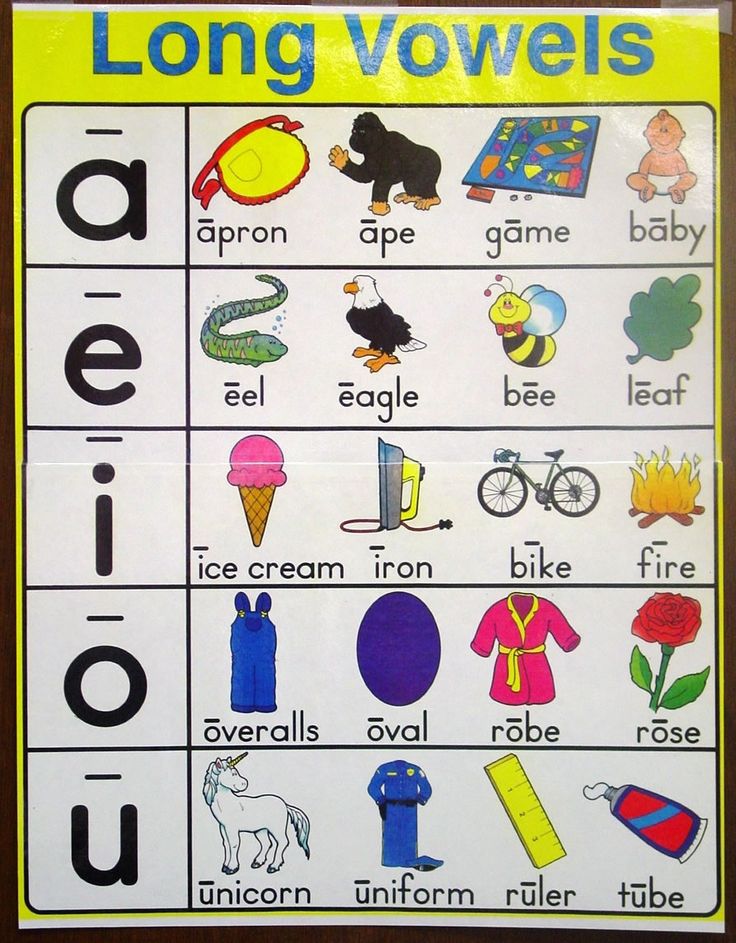
With Real Dice
- Set a vowel for each face of the dice
- Give the students two consonants
- Students roll the dice (two if you want bigger words)
- They create as many CVC words as they can and say them out loud at the end
Premade Consonant Dice
You can adjust this for more advanced students by allowing them to create bigger words using the two consonants, as long as they follow the CVC format.
- Students continuously roll the dice (for a predetermined amount of time) and write down all the words they create.
- The students read their words out loud at the end while you note which aren’t real words.
Beginners may make some silly words, but that’s fine; the importance is that they use the short vowel sound out loud.
8. Read Dr. Seuss
Better suited for children, but some adults of beginner/intermediate levels may enjoy it.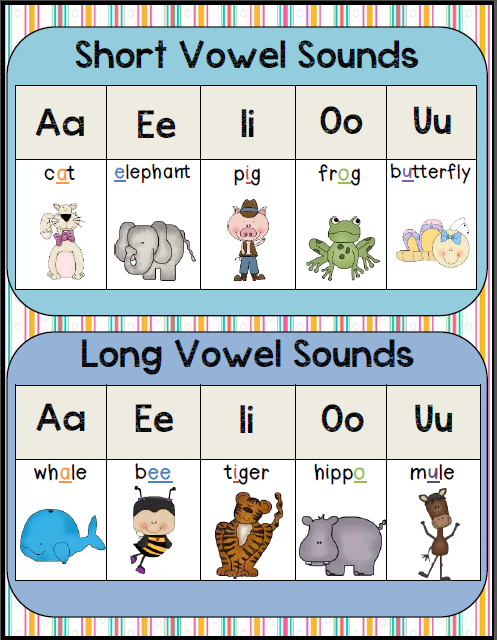
Who hasn’t read Dr. Seuss and loved the rhymes and illustrations? The books are designed to teach kids the simplest way possible, so the catchy and memorable rhymes are perfect for helping students practice and remember vowel sounds.
These three Dr. Seuss books are considered the best for learning vowel pronunciation:
- Oh Say Can You Say
- Fox in Socks
- Hop on Pop
Remember to bring attention to, or mark, the words with short vowel sounds so the students can write them down and practice them.
Conclusion
You can easily adjust all these activities to suit online and one-on-one classes, no matter your teaching style, so there’s something here for everyone.
Students will gain confidence with time and a few different activities and soon look forward to pronunciation-focused classes without nerves or overthinking!
The proof of the progress is in the pronunciation, and our free worksheets are an excellent way to get students to practice at home and solidify what you’ve taught them in class.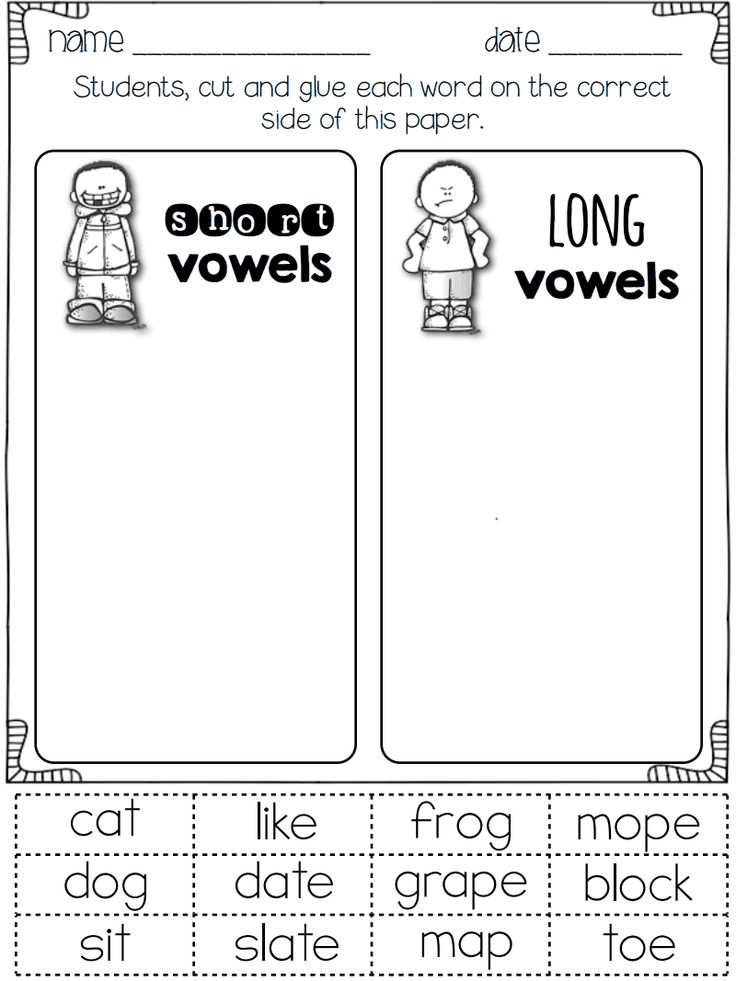
Long and short vowels in English
Longitude is one of the characteristics of a vowel sound, which shows the relative duration of its sound compared to other sounds.
Longitude can be positional and phonemic. In the first case, the duration of the vowel depends on the position in the word and stress, while this characteristic does not affect the meaning. The phonemic length of a vowel has a semantic function, that is, depending on the length of the sound, the meaning of the word changes.
Length of vowel sounds in English
In Russian, the length of vowel sounds does not affect the meaning of words and changes only depending on stress. In English, vowels differ not only in positional but also in phonemic length. This means that long and short sounds, similar in other characteristics, represent different phonemes. Words that differ only in these phonemes have different meanings: ship - sheep , fit - feet , pull - pool .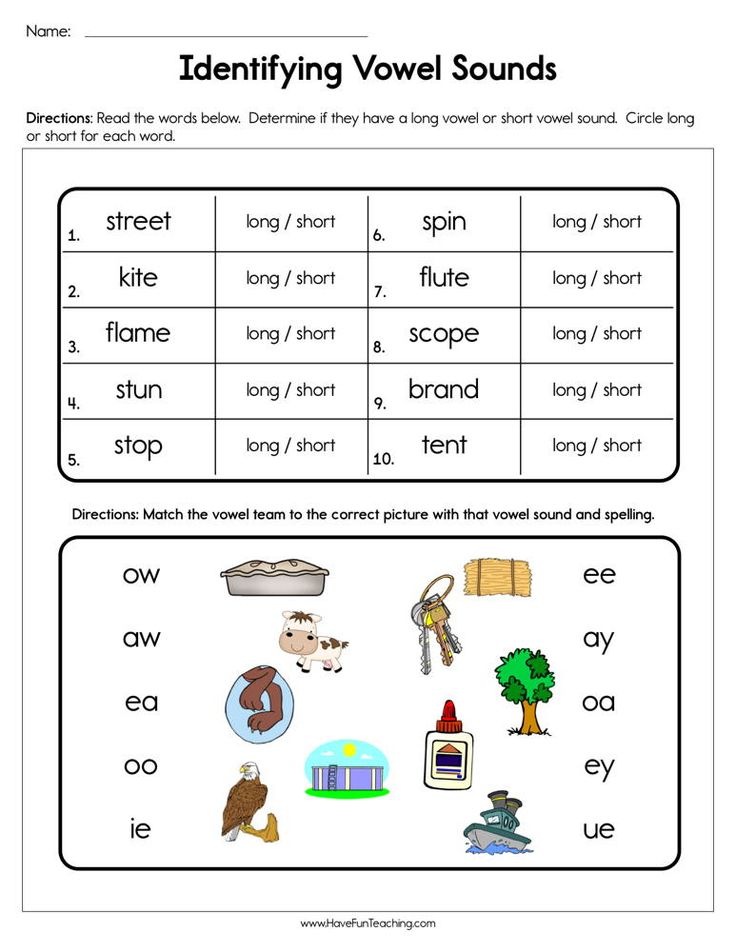 Therefore, it is so important to pronounce long and short sounds correctly.
Therefore, it is so important to pronounce long and short sounds correctly.
In transcription, long vowels are indicated with a colon: [i:], [α:], [ɔ:], [u:], [ә:]. In some cases, long vowels in an unstressed position are reduced and become semi-long, which in transcription is indicated by one dot from above: [α ].
The long vowels listed above are opposed to short vowels, forming the following pairs in English:
- [i:] - [ı]
- [uː] - [u]
- [ɔ:] - [ɒ]
- [α:] - [ʌ]
- [ә:] - [ə]
The pronunciation of long and short English vowels often causes difficulties for Russian learners of English, since in Russian vowels do not have phonemic longitude, and we are not used to distinguishing the length of a vowel sound by ear. We often do not hear the difference between long and short vowels when listening to English speech. It is still not clear how long you need to draw a sound when speaking, so very unnatural, or almost inaudible, or too long vowels are obtained.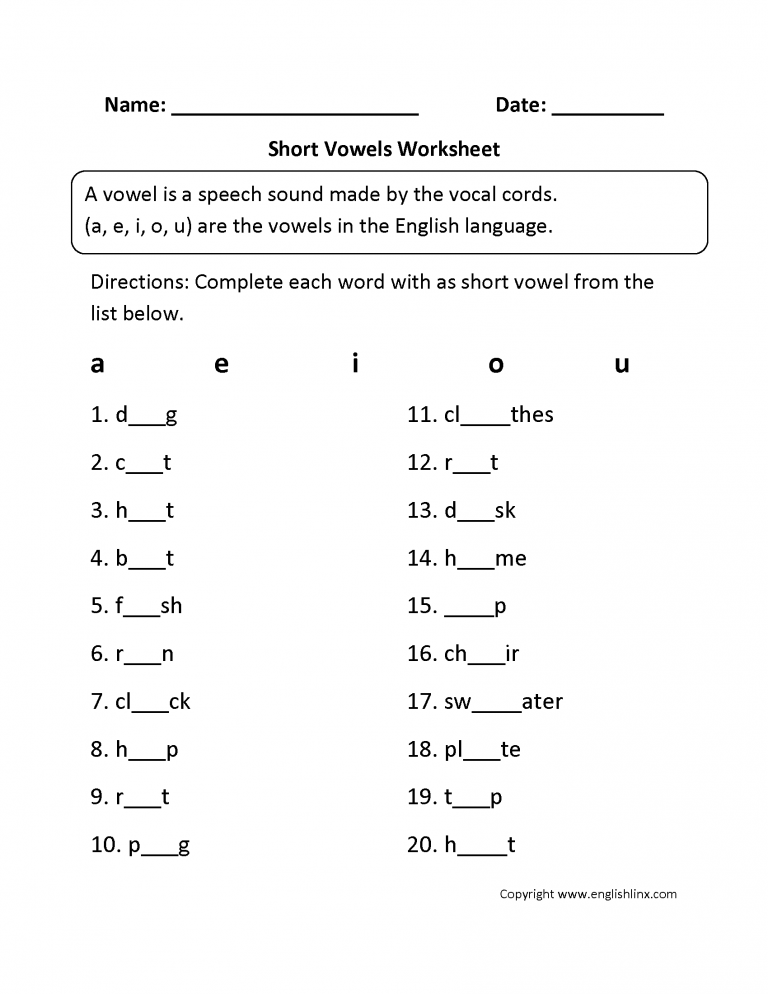 It is impossible to correctly pronounce short and long sounds so that a native speaker hears the difference, even if you diligently shorten short vowels and stretch out long ones.
It is impossible to correctly pronounce short and long sounds so that a native speaker hears the difference, even if you diligently shorten short vowels and stretch out long ones.
Sometimes it seems that native speakers themselves do not know the difference between short and long sounds, they seem to pronounce them the same way - but they themselves understand each other. But it's not. Let's see what are the differences between long and short English vowels, how to learn to hear them and how to train their pronunciation.
Differences between long and short English sounds
It is logical to assume that if vowels are called long or short, they differ in sound length. This is the main difference between them, but not the only one. It is important to understand that long and short sounds have other differences, which consist in articulatory features. This means that the sounds are not just of different lengths, they are also different in sound. And most often it is these articulatory features that determine the length of the vowel sound: the duration of the sound depends on the position of the tongue and the tension of the vocal apparatus.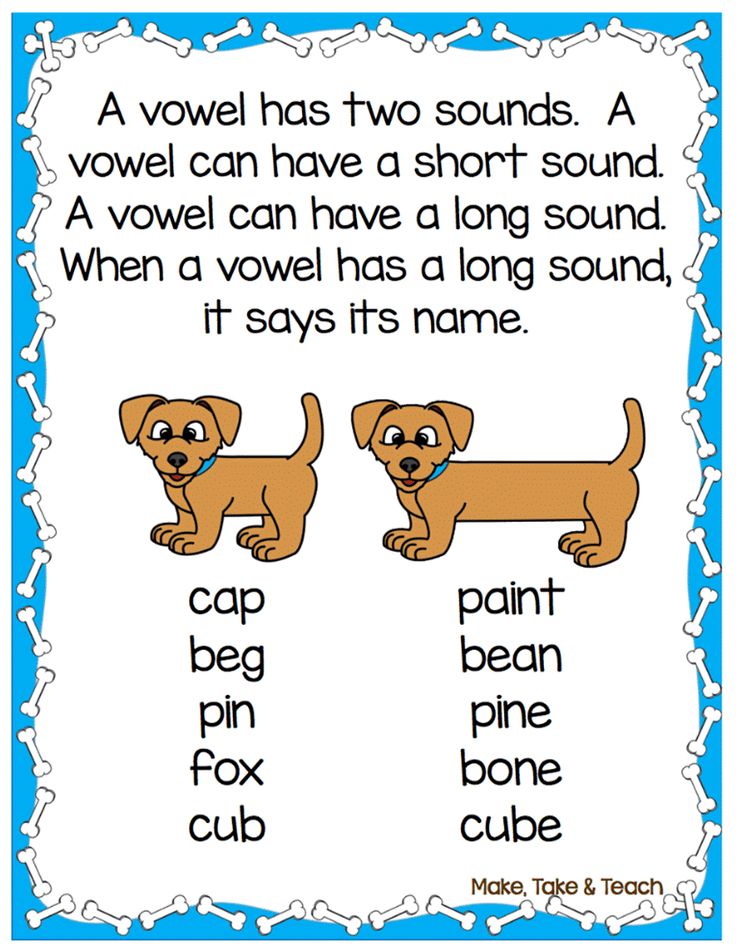
Long and short English vowels differ in such a characteristic as tension. Long vowels are tense, in English they are also called tense . When they are pronounced, the root of the tongue seems to be tense, under tension. The sound is pronounced, bright, rich, clear.
Short vowels are called lax – relaxed. The tongue in the region of the root is relaxed, the vowel sound is articulated quickly, easily, without additional effort, as if bursting. It turns out short, inconspicuous, faded and fuzzy.
Qualitative differences in sounds in different pairs of English vowels range from pronounced to almost imperceptible. It is easy to notice the difference between long and short sounds a: pay attention to how the words cart and cut are pronounced, they differ not only in duration, but also in sound. But the differences between long and short u are almost imperceptible: pool and pull sound very similar, only slightly different in length. The Scots generally pronounce them the same way, differing only in context.
The Scots generally pronounce them the same way, differing only in context.
In addition, the duration of the pronunciation of vowels is also affected by positional longitude - for example, stressed or unstressed position in a word. As a result, a short vowel sound in one word may sound longer than a long sound in another word.
Thus, it is not enough to rely only on the subjective duration of a vowel sound. All the features of short and long vowels described above must be taken into account when learning English. It remains to understand how to master the pronunciation of long and short sounds in practice.
How to learn to pronounce long and short English vowels
The main mistake foreigners make when pronouncing long and short English sounds is focusing only on duration. But with this approach, it is intuitively incomprehensible where the boundary between a long and a short sound passes: you can’t measure the length of a sound with a stopwatch.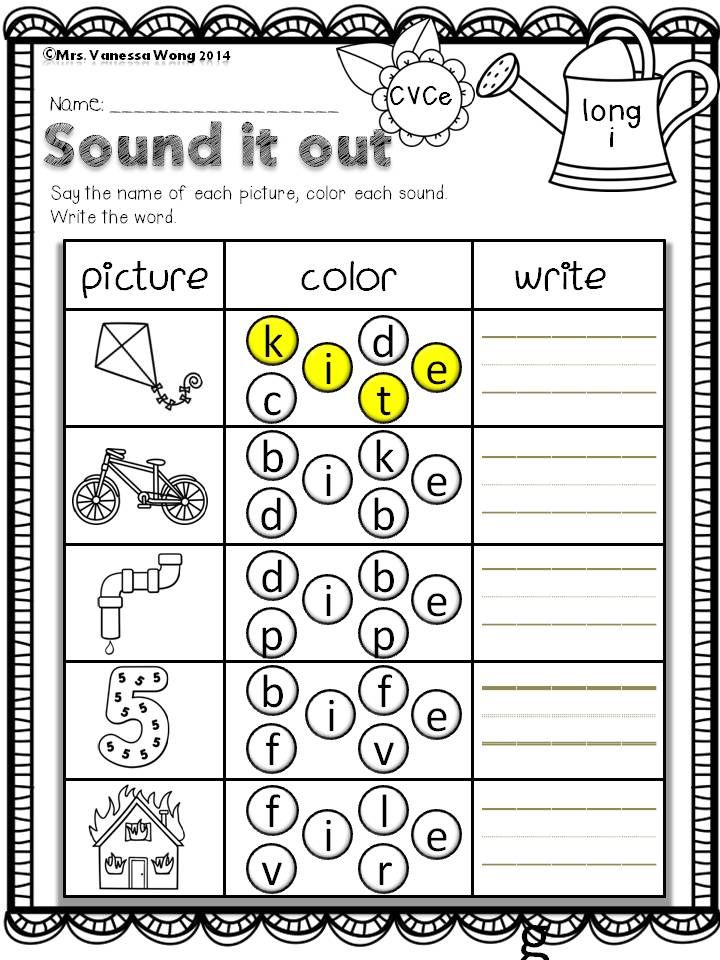 When trying to artificially lengthen or shorten a vowel, the sounds are unnaturally short or drawn out.
When trying to artificially lengthen or shorten a vowel, the sounds are unnaturally short or drawn out.
To learn how to pronounce long and short English sounds, you need to forget about the usual terminology "long" and "short". Try not to think about the duration of the sound at all. To correctly pronounce long and short vowels, you need to focus on their articulation, and not on duration. If we correctly reproduce the pronunciation of the vowel, then the duration will turn out to be correct automatically. Remember that long vowels require more tension at the root of the tongue, while short ones are pronounced without additional effort, easily and without tension.
Pay attention to how native speakers pronounce vowels - don't watch how long they draw them out, but watch the pronunciation, the articulation, the quality of the sound. Repeat, imitate, practice. For practice, it is best to use video lessons or a conversation with a native speaker, since audio materials do not make it possible to see articulation.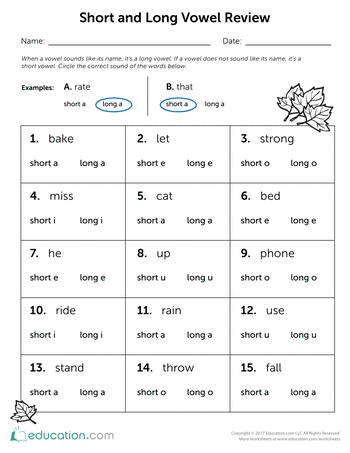
It is best to train long and short sounds not separately, but as part of words. First, this way you will note the influence of positional longitude on the duration of the sound in specific examples. Secondly, just as words are best learned in context, sounds are also best learned in the environment.
Practice pronunciation of long and short vowels in pairs of words to notice the difference between sounds, for example:
- Sport – hot
- Arm-cut
- See-hit
- Food-put
- Fur – ago
When you learn how to pronounce long and short vowels correctly in English, it will become easy to distinguish between them in speech. When listening to speech, forget about the differences in duration, pay attention to the qualitative differences in sounds - how intensely the vowel is pronounced, how bright or faded it sounds, how pairs of sounds differ from each other, except for duration.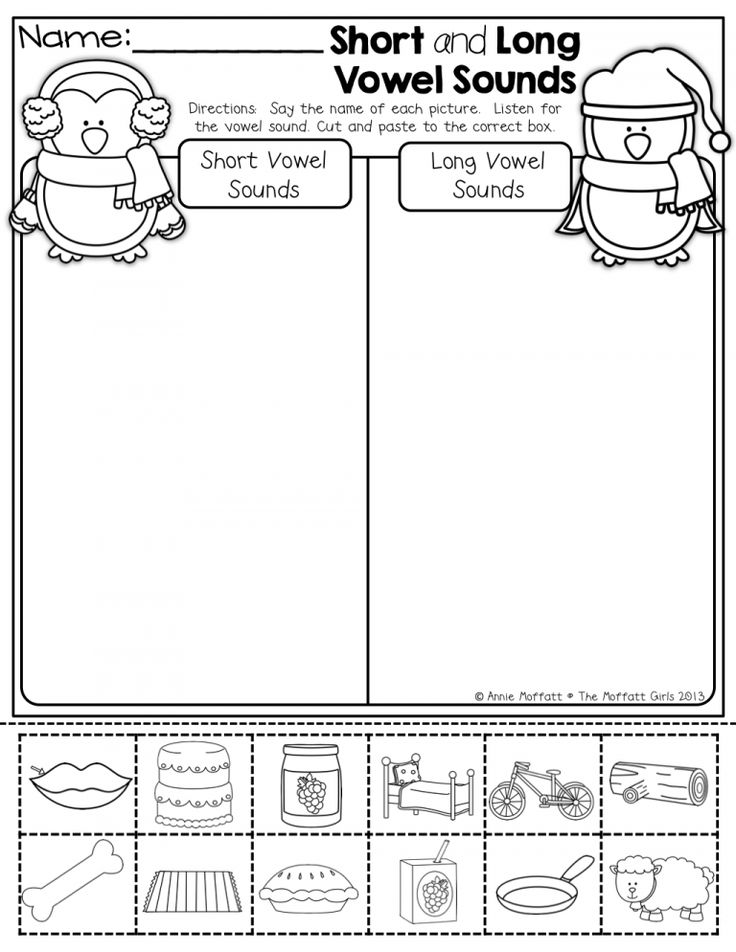

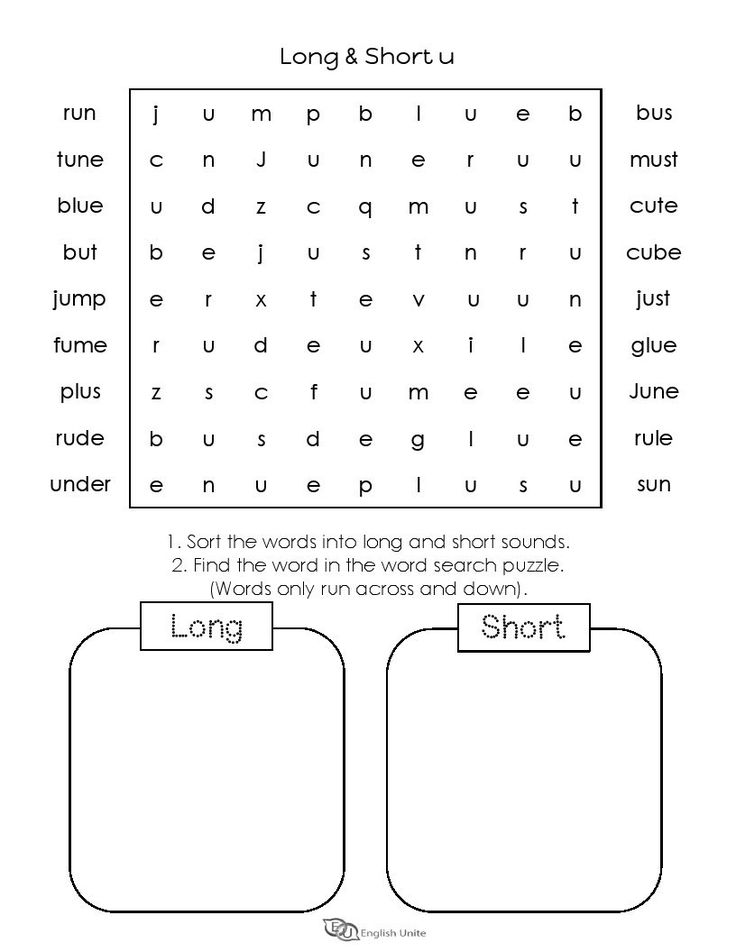 Severe symptoms appear when the tumor ...
Severe symptoms appear when the tumor ... 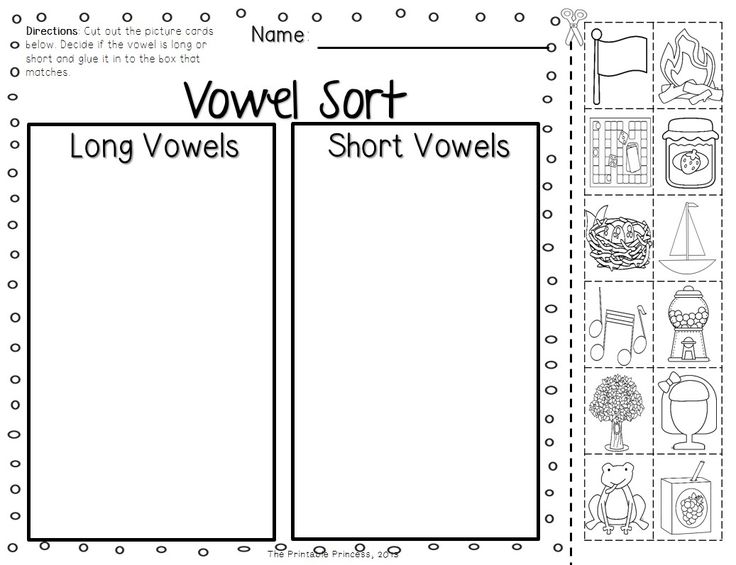
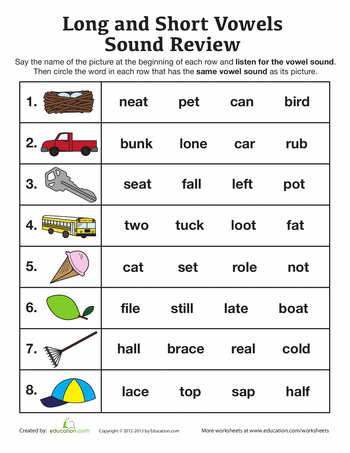 Thus, the vowel can be represented as a bundle of certain articulatory features, sometimes interrelated and interdependent. For example, the back articulation of a vowel requires rounding of the lips, when the front back of the tongue is involved, the entire tongue rises higher in the oral cavity, the long pronunciation of a vowel manifests itself in greater tension of the organs of speech at the time of articulation, etc. From the foregoing, it follows that it is possible and necessary to single out individual features in a vowel only for the sake of analyzing the vocal system of vowels.
Thus, the vowel can be represented as a bundle of certain articulatory features, sometimes interrelated and interdependent. For example, the back articulation of a vowel requires rounding of the lips, when the front back of the tongue is involved, the entire tongue rises higher in the oral cavity, the long pronunciation of a vowel manifests itself in greater tension of the organs of speech at the time of articulation, etc. From the foregoing, it follows that it is possible and necessary to single out individual features in a vowel only for the sake of analyzing the vocal system of vowels. 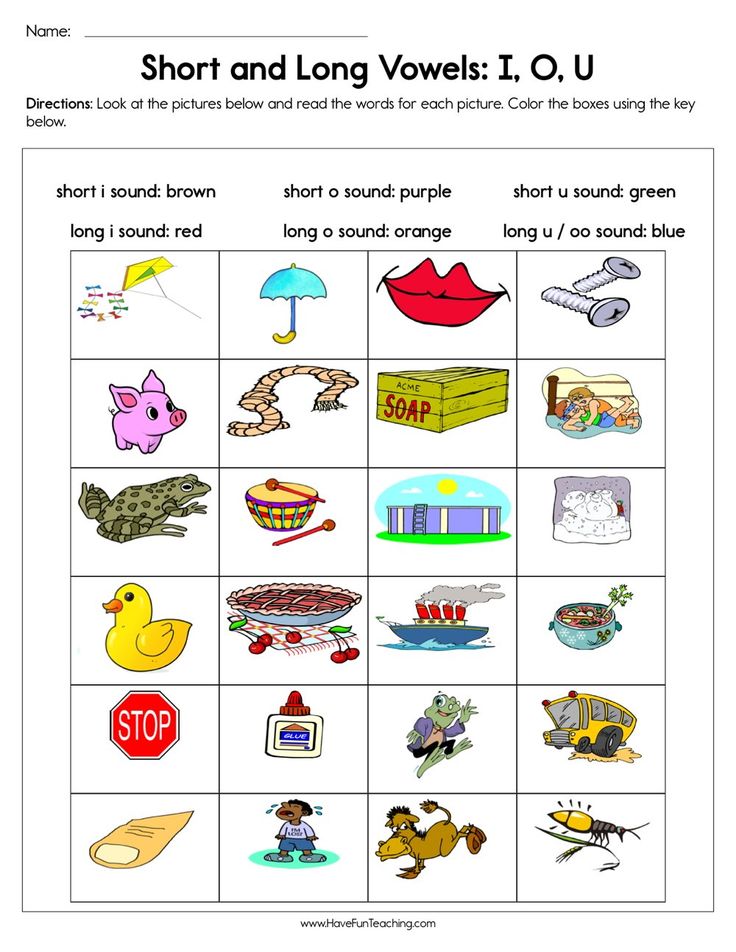
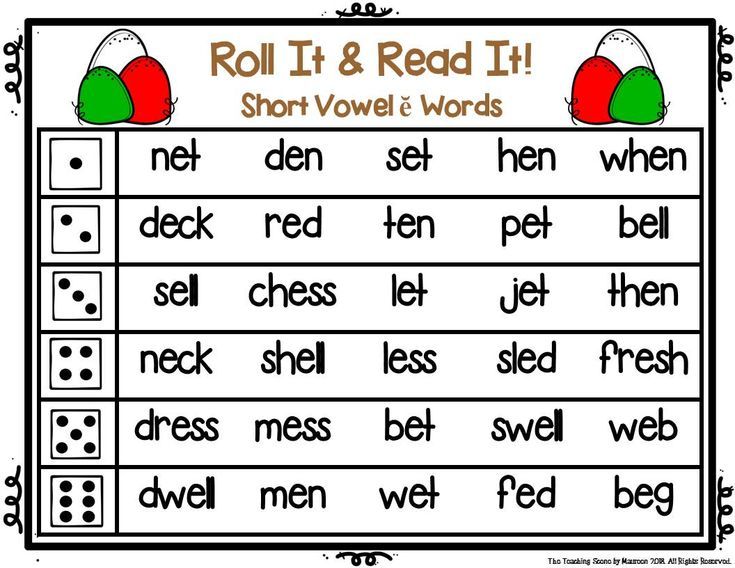 This view of the vocal system does not reveal the true difference between long monophthongs and long diphthongoids, and therefore does not take into account the subtle differences that non-native speakers need to know.
This view of the vocal system does not reveal the true difference between long monophthongs and long diphthongoids, and therefore does not take into account the subtle differences that non-native speakers need to know.  This approach is inconsistent, because the vowels in these pairs differ in the rise of the tongue, which means that a more detailed classification is appropriate.
This approach is inconsistent, because the vowels in these pairs differ in the rise of the tongue, which means that a more detailed classification is appropriate.  Traditionally, 3 positions of the lips are distinguished: stretched, neutral and rounded. For convenience, they can be reduced to 2 positions: rounded and unrounded (neutral). In English , labialization is not a relevant feature, since it is not meaningful. Rounding of the lips occurs solely for physiological reasons. For example, any English back vowel will be labialized, the degree of labialization is different and depends on the height of the back of the tongue; the higher the rise, the more rounded the lips.
Traditionally, 3 positions of the lips are distinguished: stretched, neutral and rounded. For convenience, they can be reduced to 2 positions: rounded and unrounded (neutral). In English , labialization is not a relevant feature, since it is not meaningful. Rounding of the lips occurs solely for physiological reasons. For example, any English back vowel will be labialized, the degree of labialization is different and depends on the height of the back of the tongue; the higher the rise, the more rounded the lips.  All long vowels are never truncated. Although this characteristic does not have the status of relevance in the English language, it is of great importance for Russian learners of English. It must be remembered that since all Russian vowels have free duration, special attention must be paid to English truncated ones, and it is not the duration of the vowel that is important, but the transition from it to the consonant. So, when dividing into syllables of the following words body, matter, seven, better you need to keep the vowel truncated, unlike the Russian words Borya, Seva, bita, mint , in which the vowels remain free.
All long vowels are never truncated. Although this characteristic does not have the status of relevance in the English language, it is of great importance for Russian learners of English. It must be remembered that since all Russian vowels have free duration, special attention must be paid to English truncated ones, and it is not the duration of the vowel that is important, but the transition from it to the consonant. So, when dividing into syllables of the following words body, matter, seven, better you need to keep the vowel truncated, unlike the Russian words Borya, Seva, bita, mint , in which the vowels remain free. 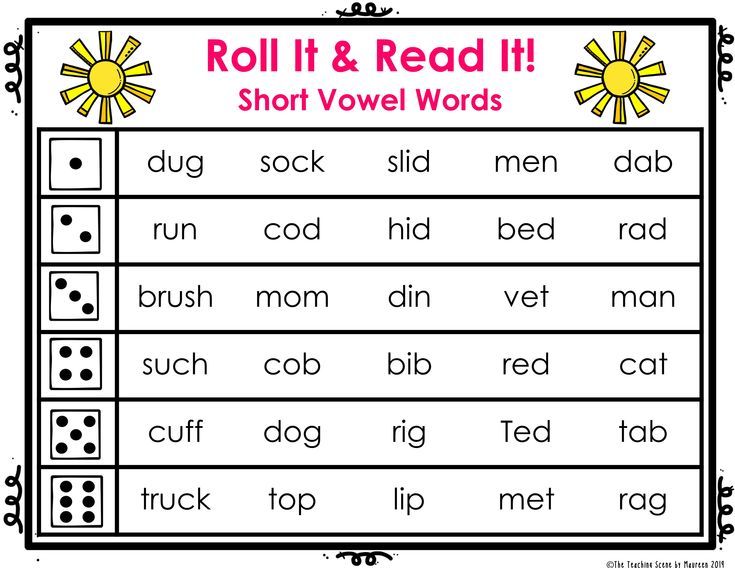 own longitude;
own longitude; 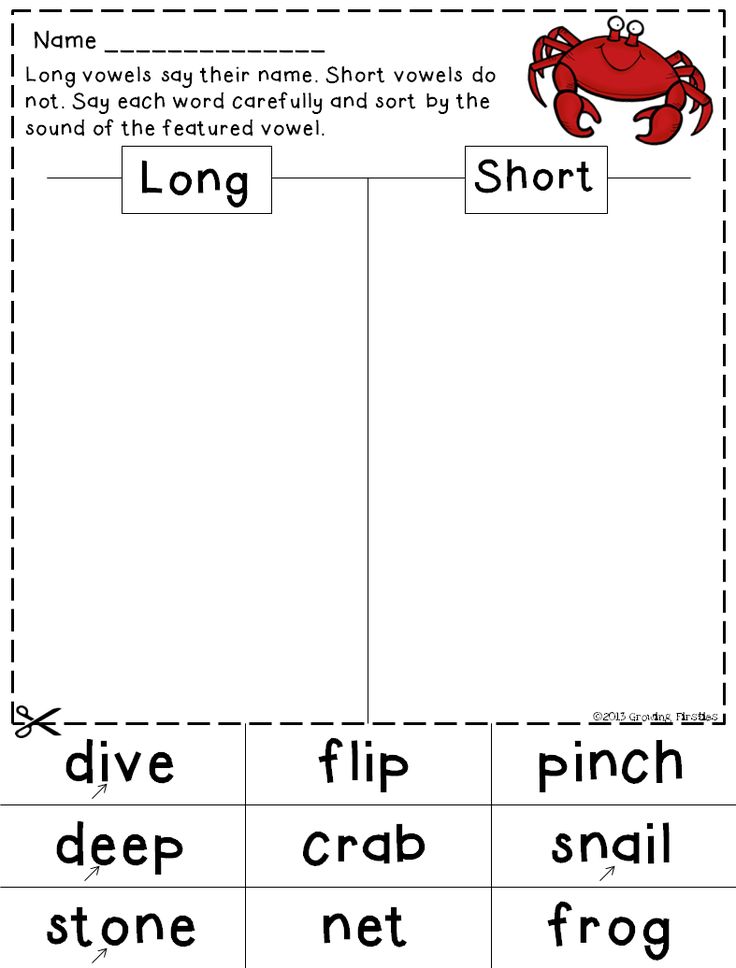 ) Thus, the difference in the number of vowels is considered decisive, and the quality of the vowel (the position of the active organ of speech) is considered secondary. However, according to Vasiliev, English is not the language in which chronemes can exist as independent prosodic phonological units.
) Thus, the difference in the number of vowels is considered decisive, and the quality of the vowel (the position of the active organ of speech) is considered secondary. However, according to Vasiliev, English is not the language in which chronemes can exist as independent prosodic phonological units. 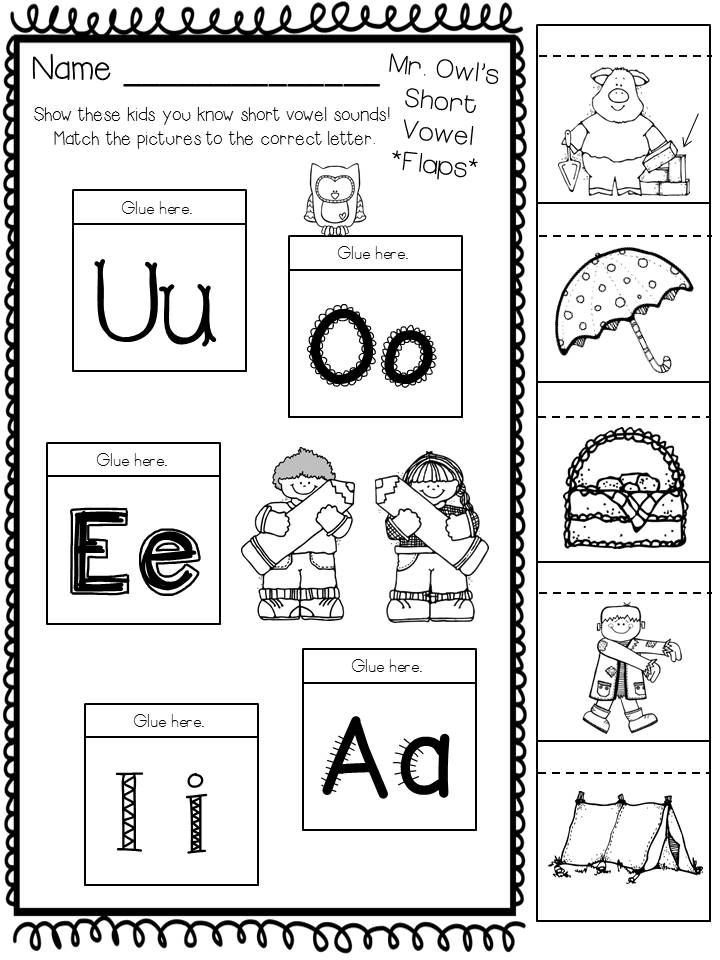 )
) 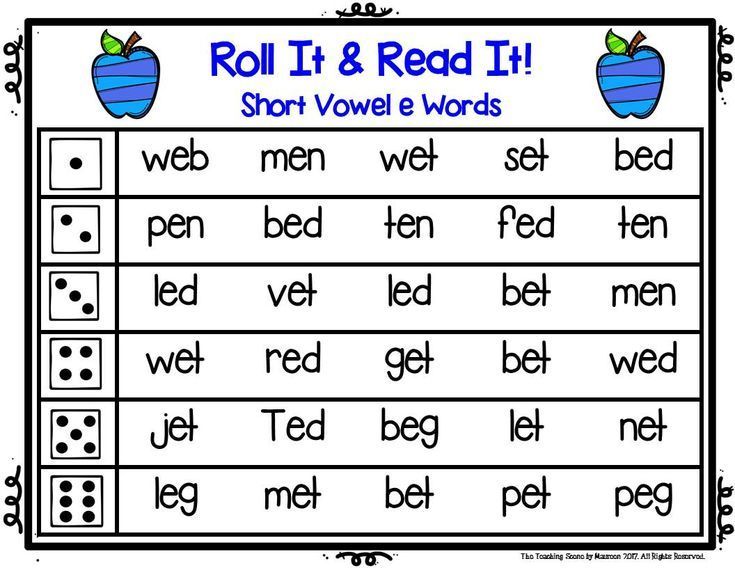
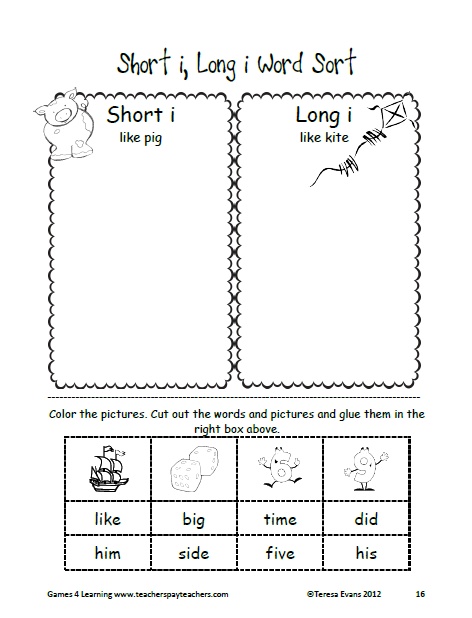 In this position, [æ] has the same quality as the long vowels [i:, a:, o:, u:, 3:]. This additional longitude, as Jisung emphasizes, serves as an additional distinctive feature, and the qualitative ratio [æ] - [e] tends to the same level as [i: - I]. From this point of view, [æ] probably belongs to a subclass of long vowels, and hence the 12 English long vowels can be divided into 6 pairs in both quality and quantity; and of the two signs, apparently qualitative has a large contrastive weight.
In this position, [æ] has the same quality as the long vowels [i:, a:, o:, u:, 3:]. This additional longitude, as Jisung emphasizes, serves as an additional distinctive feature, and the qualitative ratio [æ] - [e] tends to the same level as [i: - I]. From this point of view, [æ] probably belongs to a subclass of long vowels, and hence the 12 English long vowels can be divided into 6 pairs in both quality and quantity; and of the two signs, apparently qualitative has a large contrastive weight. 